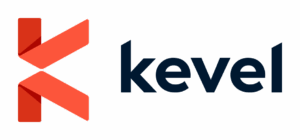We adhere to strict standards of editorial integrity to help you make decisions with confidence. Some or all links contained within this article are paid links.
It’s easy to assume that wealth and income are deeply intertwined. After all, how does anyone become wealthy without a lifetime of earning a six-figure salary?
But data gathered by Dave Ramsey’s team suggests the link between wealth and income may be weaker than most assume.
Don’t miss
- I’m 49 years old and have nothing saved for retirement — what should I do? Don’t panic. Here are 6 of the easiest ways you can catch up (and fast)
- Robert Kiyosaki warns of a ‘Greater Depression’ coming to the US — with millions of Americans going poor. But he says these 2 ‘easy-money’ assets will bring in ‘great wealth’. How to get in now
- Gain potential quarterly income through this $1B private real estate fund — even if you’re not a millionaire. Here’s how to get started with as little as $10
Only 31% of American millionaires earned an average annual income of $100,000 over the course of their careers, according to The National Study of Millionaires conducted by Ramsey Solutions. Perhaps even more surprising is that one-third of these millionaires never reached that six-figure income milestone during their careers.
It’s completely realistic to reach a seven-figure net worth without earning a six-figure salary. However, this modest path to millionaire status does require more effort and discipline.
Expenses are the key
The key to accumulating wealth is managing expenses. Many ultra-high-income individuals struggle to break into the millionaires club because they let lifestyle inflation consume them.
In fact, 36% of Americans earning more than $200,000 a year said they were living paycheck to paycheck, according to a PYMNTS survey from 2024.
By comparison, someone earning a five-figure income can become a millionaire with both disciplined saving and smart investing. Building real wealth on a mid-level income means starting early, investing wisely and consistently finding creative ways to reduce monthly expenses, like cutting insurance costs.
U.S. homeowners’ insurers have hiked premium rates by double digits over the past two years. If you’re not paying attention, that could be a major hit to your saving power.
Shopping around is one of the best ways to find better rates, but calling individual providers takes time and effort that many working people just don’t have.
OfficialHomeInsurance.com can take the hassle out of shopping for home insurance. In just under 2 minutes, you can explore competitive rates from top insurance providers all in one place.
OfficialHomeInsurance.com can make it easy to find the coverage you need at a price that could fit your budget.
But home insurance premiums aren’t the only thing coming out of homeowners’ pockets. If you own a car, you have another cost to deal with.
Car insurance rates rose an average of 16.5% in 2024, according to ValuePenguin. Like with home insurance, shopping around can lead to substantial savings.
OfficialCarInsurance.com lets you compare quotes from trusted brands — including Progressive, Allstate and GEICO — to make sure you’re getting the best deal. Their matchmaking system takes into account your location, vehicle details and driving history to find the lowest rate possible for you.
Deals can start at just $29 per month, and you can switch over your policy in only a few minutes.
Read more: Want an extra $1,300,000 when you retire? Dave Ramsey says this 7-step plan ‘works every single time’ to kill debt, get rich in America — and that ‘anyone’ can do it
Start investing early
Time can be another powerful tool for building your wealth. Given a long enough horizon, even small savings and average investment returns can grow into a substantial nest egg.
For instance, an 18-year-old would need to save only $250 a month and earn a modest 7% annual return on investment to reach $1 million by the age of 66. Put simply, if you want to accumulate exceptional wealth without an exceptional income, starting as early as possible is essential.
The best part? You don’t need a lot of money to start saving for your long-term financial goals.
With Acorns, you can automatically squirrel away your spare change with every purchase to grow your savings effortlessly.
The app rounds up each of your everyday purchases to the nearest dollar and invests the difference into a diversified portfolio of ETFs. This means that every transaction — from your morning coffee to grocery shopping — contributes to building your savings account.
That $13.60 lunch? Acorns rounds it up to $14. That’s 40 cents dropped straight into your savings. You can even get a $20 bonus investment when you sign up with a recurring deposit.
Over the course of a lifetime, a little can go a long way.
Avoid or limit debt
Another essential ingredient in your climb from modest to millionaire is reducing your exposure to debt. After all, serving the interest payments on credit cards or high-interest loans can offset the positive impact of a diligent savings and investing strategy.
For most people, avoiding debt — especially the expensive type — is their biggest challenge. As of early 2025, U.S. households collectively had nearly $5 trillion in non-housing debt such as student loans, auto loans and credit card balances, according to the New York Federal Reserve.
Serving this debt could be one of the key reasons why the average personal savings rate in the United States is only 4.9%, based on data from the Federal Reserve.
By limiting or eliminating consumer debt, you can save more. That could be the key to your financial freedom, regardless of your income.
The best place to start? Paying off high-interest debt as soon as possible. If you have significant equity in your home, you could also consider consolidating what you owe with a Home Equity Line of Credit (HELOC) to lower your interest rate and accelerate your payoff.
A HELOC is a secured line of credit that leverages your home as collateral. Depending on the value of your home and the remaining balance on your mortgage, you may be able to borrow funds at a lower interest rate from a lender as a form of revolving credit.
Rather than juggling multiple bills with varying due dates and interest rates, you can consolidate them into one easy-to-manage payment. The results? Less stress, generally reduced fees, and the potential for significant savings over time.
LendingTree’s marketplace connects you with top lenders offering competitive HELOC rates.
Terms and conditions apply. NMLS#1136.
Keep in mind that not all loans are created equal, and it’s important to understand not only your interest rates but also the repayment period and what assets could be used as collateral.
Creative planning
Life can be messy. Even if you follow all the traditional financial advice, your journey to financial freedom could be derailed by health issues, divorce, bankruptcy or emergencies.
If you’re approaching retirement without much savings or a high-paying career, your chances of becoming a millionaire are lower. That doesn’t mean it’s impossible to enter the club.
Creative solutions could help you get there despite the odds. For instance, you could boost your savings rate by temporarily moving to a town or country with a lower cost of living. Working remotely while paying modest rent in Mexico, for example, could help you accumulate wealth faster.
You could also delay retirement. Adding five or even 10 years to your retirement plan could make a difference, especially if you’re building your nest egg later in life. A 40-year-old would need to save just $900 a month and earn a 7% return on investment to reach millionaire status at 75.
You can also potentially increase your returns by investing in alternative assets, such as farmland, small businesses, high-growth tech stocks or rental properties.
If you’re looking to get into real estate without big down payments or tying yourself to a mortgage, you could tap into the market through crowdfunding platforms like Arrived.
Backed by world-class investors including Jeff Bezos, Arrived allows you to invest in shares of vacation and rental properties, allowing you to potentially receive passive income without having to manage midnight maintenance calls or burst pipes.
To get started, simply browse through Arrived’s selection of vetted properties, each picked for their potential appreciation and income generation. Once you choose a property, you can start investing with as little as $100.
There’s always a practical path to the seven-figure club, regardless of your age or income.
What to read next
- JPMorgan sees gold soaring to $6,000/ounce — use this 1 simple IRA trick to lock in those potential shiny gains (before it’s too late)
- This is how American car dealers use the ‘4-square method’ to make big profits off you — and how you can ensure you pay a fair price for all your vehicle costs
- Here are 5 ‘must have’ items that Americans (almost) always overpay for — and very quickly regret. How many are hurting you?
- How much cash do you plan to keep on hand after you retire? Here are 3 of the biggest reasons you’ll need a substantial stash of savings in retirement
Like what you read? Join 200,000+ readers and get the best of Moneywise straight to your inbox every week. Subscribe for free.
This article provides information only and should not be construed as advice. It is provided without warranty of any kind.

